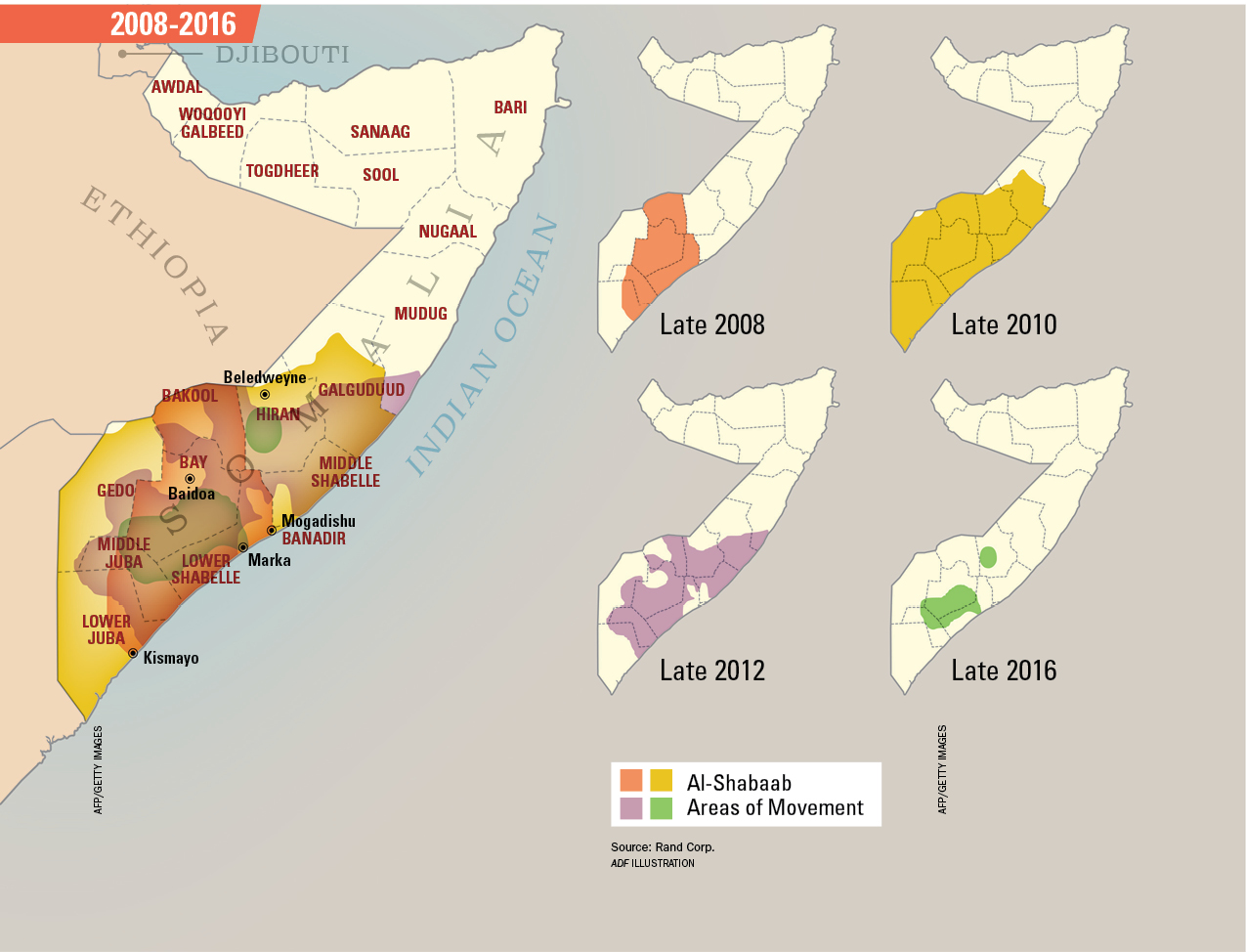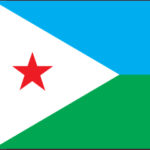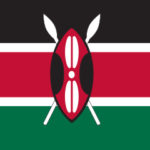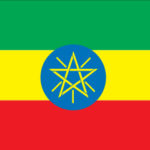The Multinational African Security Force Has Made Steady Gains Against al-Shabaab Terrorists
ADF STAFF
Baardheere in Somalia is a town known for its agricultural production. Its climate is suitable for growing year-round crops of sorghum, corn, onions, beans and fruits, such as bananas, watermelon, oranges and papayas. Its name means “tall palm tree,” and its namesake lines the banks of the Jubba River, which winds its way through the area.
For eight years, the town also was known as a prime stronghold of the militant group al-Shabaab. Until July 2015, the al-Qaida-linked militants used Baardheere and neighboring Diinsoor as bases of operation. To fund terrorism, militants collected taxes from Baardheere farmers, controlled food production and extracted tolls on a bridge, according to AMISOM Review magazine. “Initially when we came over, the locals here were a little bit apprehensive because of the long rule from the al-Shabaab, they were 50-50 in accepting us but now they have seen the profits of us coming over here,” Col. Abdirashid, African Union Mission in Somalia (AMISOM) battalion commander in Baardheere, told the magazine in late 2015. “Right now, there is a lot of activity going on in town. We have a marketplace that is bubbling with activities, we have a livestock market that is going on, we have small entrepreneurship businesses that are coming up and for the first time maybe in around eight years, locals are able to access television and radios, something that was not there when Al-Shabaab were in control here.”

Abdi Dakane/AMISOM
AMISOM’s success in Baardheere has been replicated many times in Somalia as the force, in partnership with the Somali National Armed Forces, has liberated town after town. But the task has not been easy. AMISOM’s successes come after decades of violence, anarchy and lack of governance in Somalia. Al-Shabaab’s reach and influence has been reduced, but the group remains a deadly adversary. Much still must be done as AMISOM and the Transitional Federal Government (TFG) work to build government institutions and a Somali security force that can guarantee security for years to come.
A HISTORY OF LAWLESSNESS
After the fall of longtime President Mohamed Siad Barre in 1991, Somalia slipped into decades of chaos. Rival warlords battled for influence and territory in the absence of any meaningful central government.
In this vacuum, a group of Islamic courts began trying to instill a degree of order after years of anarchy and political paralysis. The courts were “not so much an Islamist imperative as a response to the need for some means of upholding law and order,” according to a Chatham House paper. Clans recruited local militias to enforce rulings, mostly in sections of the capital, Mogadishu.
Soon, the courts began to proliferate beyond Mogadishu, into the port city of Marka and the Lower Shabelle region. Eleven courts in Mogadishu meted out justice for petty crimes and theft and murder, according to the BBC. They also oversaw marriages. The Islamic Courts Union (ICU) clashed with the TFG as the fledgling government and Ethiopian troops occupied the capital in late 2006.

REUTERS
ICU hard-liners broke off to become a brutal military force known as al-Shabaab, or “the youth,” in 2006. Al-Shabaab consolidated territory and influence mostly in southern Somalia, including the ports of Kismayo and Barawe. This allowed it to import weapons and fighters and make money through the sale of sugar and charcoal. It was with the advent of al-Shabaab that Somalia became the epicenter for East African extremism.
THE MISSION IN SOMALIA
In January 2007, the African Union’s Peace and Security Council created AMISOM to protect the new transitional government and establish security. The mission began with about 1,500 Ugandan Soldiers in Mogadishu but later was expanded to a multidimensional force of 18,000. Later, its mandated total grew to about 22,000 uniformed personnel.
AMISOM was no ordinary peacekeeping mission, wrote Bronwyn E. Bruton of the Atlantic Council’s Africa Center and Paul D. Williams of George Washington University in “Counterinsurgency in Somalia: Lessons Learned from the African Union Mission in Somalia, 2007-2013.” AMISOM “engaged in a variety of activities including VIP protection, warfighting, counterinsurgency, as well as facilitating humanitarian assistance in a city — and later wider region — torn apart by war and political disputes.”
Uganda was joined in late 2007 and early 2008 by Burundi, and troops from Djibouti, Ethiopia, Kenya and Sierra Leone followed. AMISOM troops “operated alongside but distinct from” Ethiopian troops, who had entered Somalia in 2006 to defeat the ICU, until their withdrawal in 2009, Bruton and Williams wrote. AMISOM protected key TFG members, the presidential palace, airports and seaports.
THE TIDE TURNS
In battling TFG and AMISOM forces, al-Shabaab used asymmetric warfare, such as snipers, improvised explosive devices (IEDs) and suicide bombings. It was the use of this type of warfare outside Somalia that began to turn the tide against the extremists, Bruton and Williams wrote. In mid-2010, al-Shabaab bombed two public sites in Kampala, Uganda, as people watched World Cup football. Although more than 70 people died, Uganda and Burundi deployed more troops to Mogadishu.
“The second major turning point was the failure of al-Shabaab’s major offensive against the TFG and AMISOM launched during Ramadan of 2010,” according to Bruton and Williams. “The plan was to isolate approximately 40 percent of AMISOM’s forces which were deployed in the Villa Somalia area. … After two weeks of intense fighting, however, al-Shabaab forces had suffered a series of significant losses, with AMISOM intelligence estimating between 500 to 700 fatalities with an additional 2,000 wounded.”
Over time, AMISOM forces would work alongside — and eventually absorb — some Soldiers deployed by Ethiopia and Kenya serving independently of the AU-backed mission. As the combined forces grew to about 22,000, AMISOM would begin to see a string of successes through liberated cities and the diminution of al-Shabaab-controlled territory.
THE ROAD AHEAD
As of late 2016, much work still remains. Al-Shabaab is diminished, but it still is capable of devastating attacks inside and outside Somalia. Although al-Shabaab had been pushed out of most major cities, the group perpetrated devastating attacks using improvised explosive devices (IEDs). In fact, 2016 was shaping up to be the worst year yet for IED attacks in Somalia, according to the Sahan Research Group, which had logged 225 attacks as of mid-October, according to Voice of America.
In August 2016, blasts at two Mogadishu hotels killed 22 people, VOA reported. Later, a car bomb killed a Somali general and his bodyguards.
“IEDs are the biggest threat in this counter-insurgency, counter-terrorism operation,” AMISOM Deputy Force Commander Maj. Gen. Nakibus Lakara told VOA. “Al-Shabab has been able to leverage its expertise on IEDs to very, very devastating effect.”
Al-Shabaab also has shown a willingness and ability to strike targets outside Somalia. In recent years, armed militants wreaked havoc in Kenya at Westgate Shopping Mall and Garissa University College. On October 6, 2016, al-Shabaab forces killed six people at a public works site in Mandera County.
In the midst of this, Somalia has shown remarkable progress in recent years, according to Ambassador Francisco Caetano Madeira, the civilian head of AMISOM. In The Africa Report, Madeira wrote that Mogadishu buzzes with new life, and international businesses are starting to take notice. But now is not the time for the international community to slacken its investment in Somalia’s security, he said.
“Thanks to the bravery of AMISOM and SNA [Somalia National Army] troops and considerable monetary investment, these victories and others have altered the security landscape in Somalia dramatically, allowing for government institutions to be installed and function in all regional governments,” he wrote.
Madeira said in advance of the 2016 Somali national election that the international community must stand firm. “We must continue to support the critical work of AMISOM, and commit to the future of Somalia — for the benefit of the humankind, free and peaceful interaction in the eastern Africa region, and, above all, the Somali people.”
Al-Shabaab Freedom of Movement
Al-Shabaab’s control of southern Somalia reached its peak in 2010, but researchers say the group’s asymmetric attacks outside the country, which caused civilian casualties, eroded its support. By 2016, al-Shabaab had freedom of movement in a small fraction of the country.
Countries’ Contributions to AMISOM
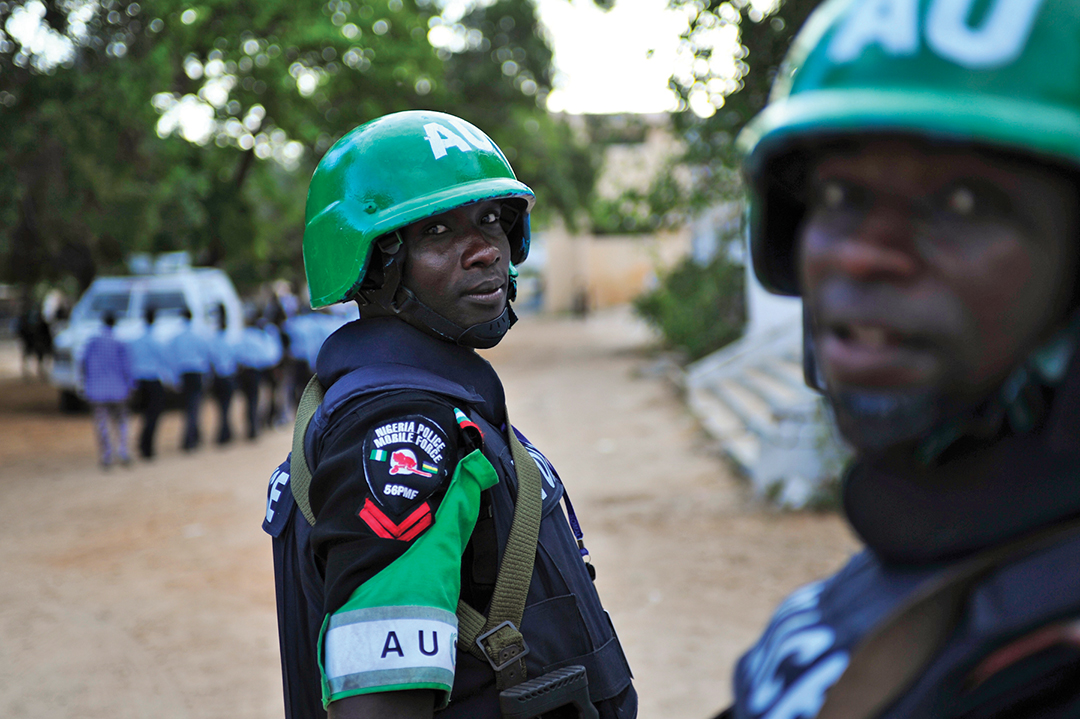
TOBIN JONES/AU-UN INFORMATION SUPPORT TEAM
The African Union Mission in Somalia is authorized to have a maximum of 22,126 uniformed personnel. Here is how the numbers break down for each country:
TIMELINE
Uganda was the first nation to deploy troops in March 2007, and the Uganda People’s Defence Force (UPDF) still has the largest contingent in AMISOM. It has more than 6,200 troops in Sector 1, which includes Banadir and Lower Shabelle regions.
Burundi National Defence Force troops joined AMISOM in December 2007. Burundi based more than 5,400 Soldiers in Baidoa, and they are responsible for Sector 3, made up of Bay, Bakool and Gedo regions. Burundian troops also serve with UPDF forces in Sector 1.
In December 2011, Djibouti became the third country to send forces. Djibouti has deployed 960 troops, who are based in Beledweyne, the headquarters of Sector 4, which covers the Hiiraan and Galgaduud regions.
Sierra Leone sent a contingent of 850 Soldiers to AMISOM in April 2013, but the forces have since returned home. While in Somalia, the forces served in the port city of Kismayo in Sector 2. The Ethiopian National Defence Force replaced Sierra Leone in Kismayo.
Kenya Defence Forces (KDF) troops entered Somalia unilaterally to pursue al-Shabaab after a series of border incidents. Soon after, the KDF agreed to join AMISOM, and its Soldiers were formally integrated in February 2012. Kenya has deployed more than 3,664 troops in Sector 2, which is made up of the Lower and Middle Juba regions with its headquarters in Kismayo.
Ethiopia was the sixth nation to join the mission. In 2014, the Ethiopian National Defence Force added nearly 4,400 uniformed personnel in AMISOM Sector 3. Burundian and Ugandan forces moved into parts of Lower and Middle Shabelle, allowing for the creation of Sector 5 in Middle Shabelle.
July 1, 1960
Somalia gains independence.
January 27, 1991
President Mohamed Siad Barre is ousted and flees the country; clan violence kills and wounds thousands.
June 1, 2004
Eleven Sharia courts unite to form the Islamic Courts Union (ICU).
October 1, 2004
Abdulahi Yusuf is elected president of Somalia’s Transitional Federal Government (TFG), which was formed in exile in Nairobi, Kenya.
June 1, 2006
Al-Shabaab militants and the ICU take Mogadishu after a clash with Somali warlords.
July 20, 2006
Ethiopian troops invade Somalia and capture Mogadishu in December.
January 19, 2007
The African Union’s Peace and Security Council creates the African Union Mission in Somalia (AMISOM), and the TFG moves into Mogadishu.
March 2007
Uganda becomes the first African nation to deploy troops to Somalia under AMISOM.
December 2007
Burundi becomes the second African nation to deploy troops to Somalia under AMISOM.
January 2009
Ethiopia completes its withdrawal from Somalia.
February 2010
Al-Shabaab agrees to ally itself with al-Qaida. Their formal merger is announced two years later.

July 11, 2010
Al-Shabaab’s first terror attack outside Somalia kills 76 people and injures dozens at two locations in Kampala, Uganda, during outdoor screenings of the FIFA World Cup Final.
August 7, 2011
AMISOM forces liberate Mogadishu from al-Shabaab control.
October 16, 2011
Kenyan forces move into southern Somalia, beginning Operation Linda Nchi, a coordinated operation between Kenya and Somali forces that translates as Operation Protect the Nation.
December 2011
Ethiopian forces capture the strategic town of Beledweyne, and then Baidoa in February 2012.
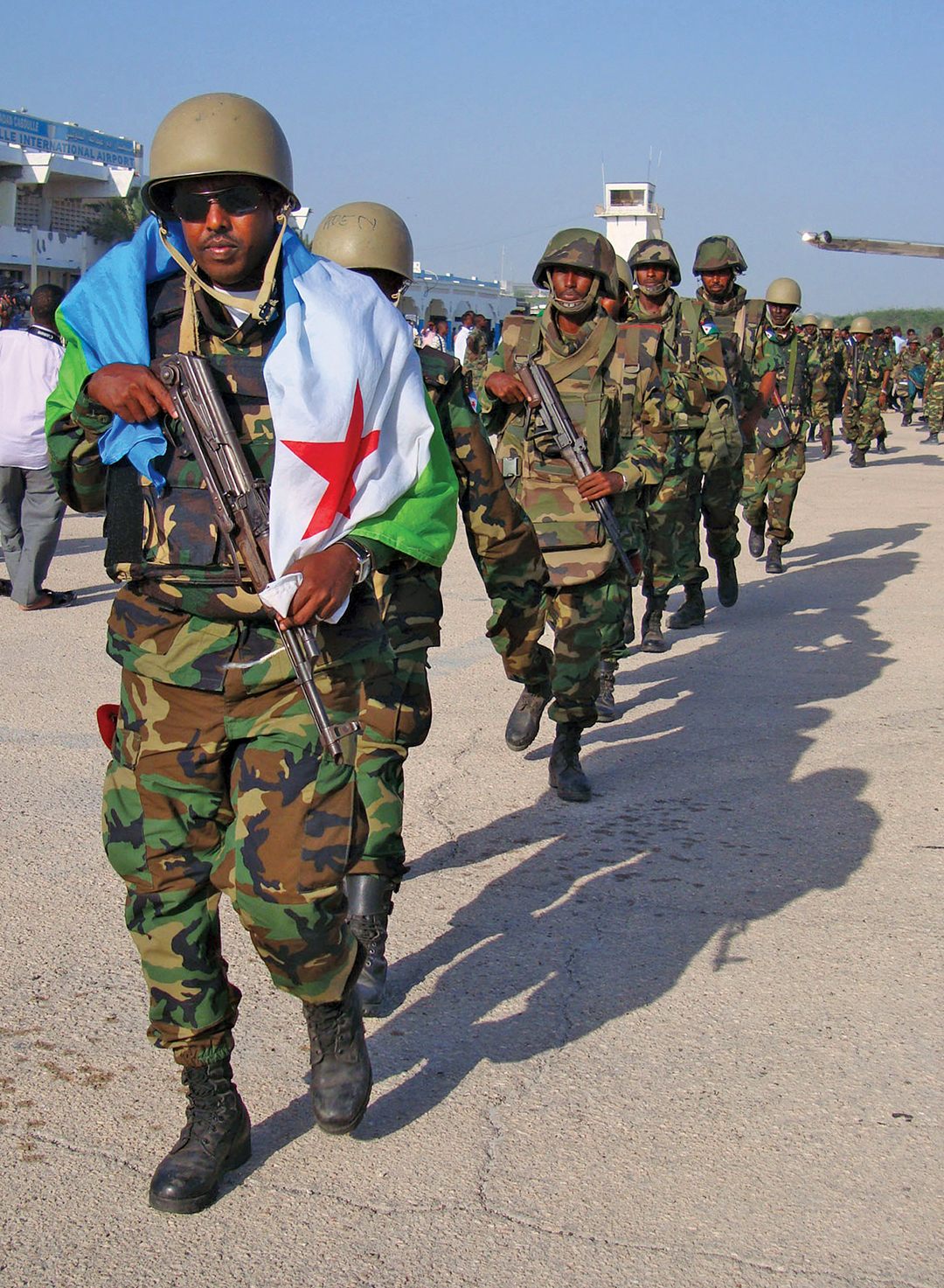
December 20, 2011
Djibouti sends its first troops to Somalia as part of AMISOM, the first 100 of more than 900.
February 22, 2012
Kenyan forces are formally integrated into AMISOM after passage of a United Nations Security Council resolution.
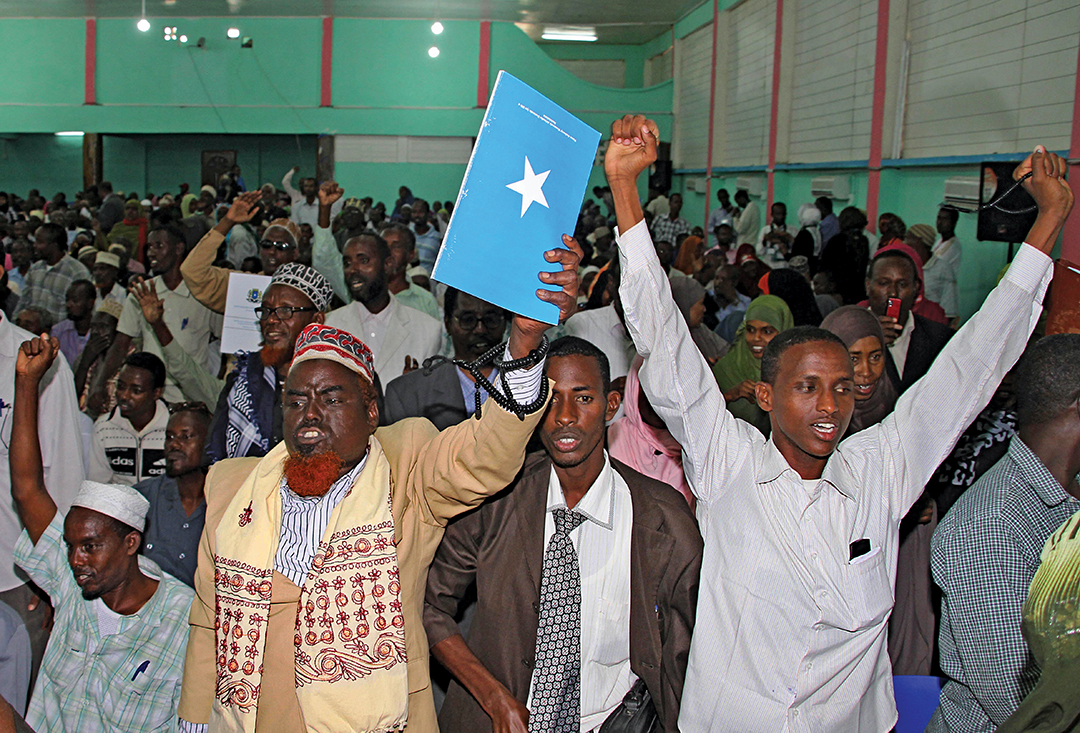
August 1, 2012
The National Constitutional Assembly in Mogadishu adopts the Provisional Constitution of the Federal Republic of Somalia.
August 20, 2012
Somalia’s first parliament in more than 20 years is sworn in after an eight-year transition.
August 27, 2012
Somali National Army and AMISOM troops push al-Shabaab out of Marka, southern Somalia’s third-largest port.
September 26, 2012
AMISOM and Somali forces advance on the port city of Kismayo, pushing out al-Shabaab in Operation Sledge Hammer.
April 3, 2013
Sierra Leone becomes the fifth country to send troops to AMISOM, deploying 850 to fight alongside Kenyans in southern Somalia.
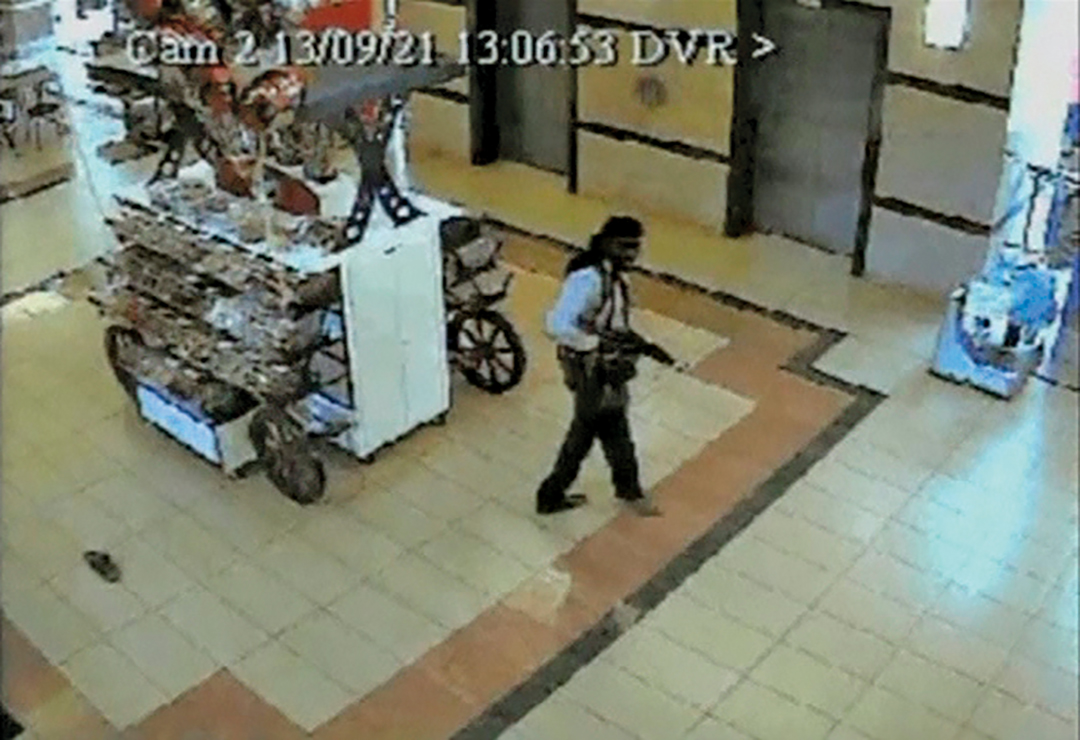
September 21, 2013
Al-Shabaab gunmen attack the Westgate Shopping Mall in Nairobi, Kenya, killing 67 and wounding more than 175.
January 22, 2014
AMISOM welcomes 4,395 troops from the Ethiopian National Defence Forces, the sixth national contingent to be included in the mission.
March 2014
AMISOM and Somali forces launch Operation Eagle, which liberates 10 towns, including some in the Bay, Bakool, and Gedo regions.
August 29, 2014
AMISOM launches Operation Indian Ocean, its second major offensive action of 2014, eventually leading to the capture of strategic coastal towns.

October 5, 2014
AMISOM and Somalia Army troops liberate the port city of Barawe, al-Shabaab’s “terror capital,” from which it imported arms and fighters and exported charcoal to fund its operations.
March 22, 2015
Somalia National Army and AMISOM troops liberate the island of Kuday, in Kismayo, the region’s last al-Shabaab stronghold and a key logistical and operational base used to launch attacks in southern Somalia.
July 19, 2015
AMISOM and Somali forces launch Operation Jubba Corridor to flush al-Shabaab from rural Bay and Gedo regions.
October 25, 2016
AMISOM troops repel an attack on their camp in Beledweyne after al-Shabaab militants detonated a vehicle at the gate and forced their way in. All 10 militants were killed. Two AMISOM Soldiers died.


